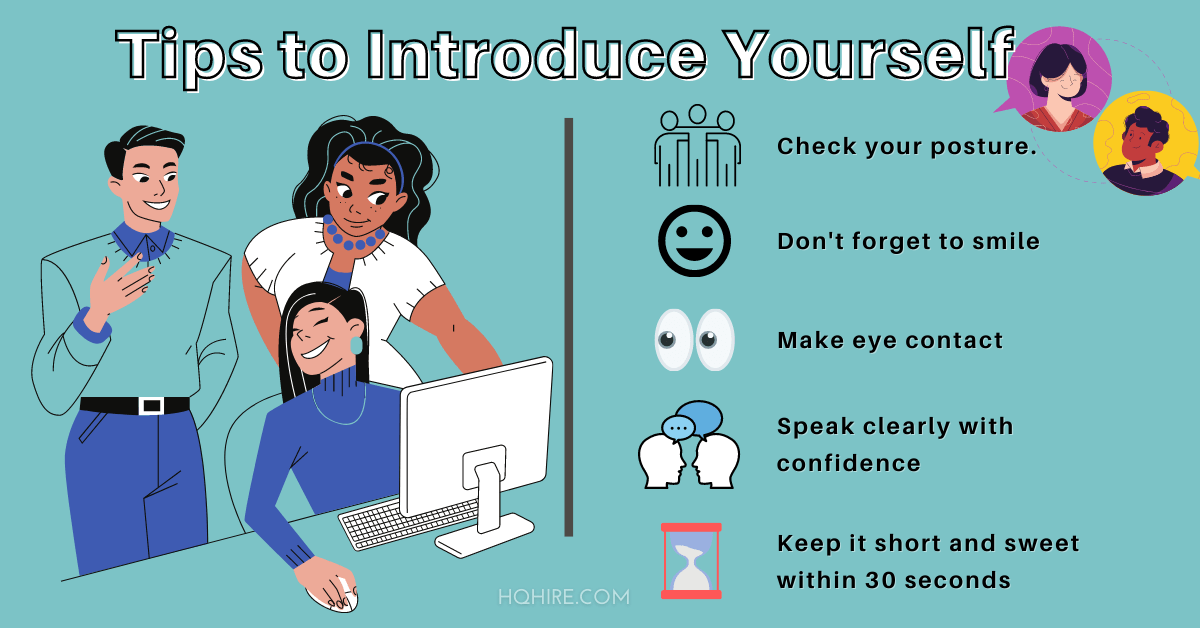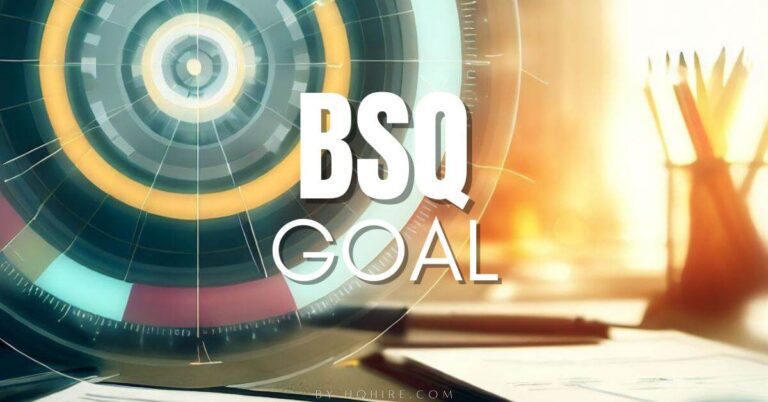Congratulations on starting a new job!
This might be your first day, first week, or even first month at a new job. Being in a new environment, it’s important for you to start your career on the right foot.
But how to make a good impression at work?
Start by sending a few email when you start a new job.
In fact, with the new normal in the workplace, many companies are moving to hybrid work arrangements, where the workforce is distributed to both in-office and remote workers.
With more people working from home, knowing how to write professional emails, scheduling virtual meetings, replying to request, and knowing what emails to send when starting a new job have become an essential skill.
We’ve created a list of best Email Templates that you can use when you start a new job.
Use these email templates to build both professional and personal relationships with your coworkers now!
How to Dress for Your First Day of Work?
1. Email to New Boss Before Starting a New Job
Before starting your first day of work at a new job. You may want to prepare your new employer for your arrival.
Just take a few minutes and sent a simple email to your future boss to establish a connection that you’re looking forward to join the team.
An email to your boss before starting in your job will give the impression that you are a go-getter and highly motivated in your new role.
This is probably the best time for you to reestablish your commitment and reinforce their decision that they have made the right choice in hiring you, and send when you’re starting your new role in the company.
Email to boss before starting a new job (Template)
Hi [Boss’s Name],
I can’t wait to start working with you and the team in [Company]. I am writing to confirm my first day of work to be on [Weekday, Date].
In preparation to start my first day with [Company], is there anything I can read or do ahead of time?
I do also have a few questions.
- [Question 1]
- [Question 2]
- [Question x]
Looking forward to seeing you soon!
Best Regards,
[Your Name]
[Your New Job Title]
[Your Contact Number]
2. Email HR Before Starting a New Job
Before starting your first day at work, you may want to write a short and simple email to HR to confirm your start date as well as to understand more about your onboarding process.
As a part of the preparation for your onboarding, this is also the best opportunity for you to ask questions that can help you clarify queries and better prepare yourself for your new job.
- Confirmation on your first day of work
- Company’s dress code
- Things to prepare
- Transportation arrangements
- Documents required for onboarding
Email to HR before starting a new job (Template)
Hi [HR’s Name],
Thank you for giving me this opportunity to work in [Company] as [Job Role]. I’ve received the offer letter and I would like to join on the date mentioned in the offer letter [Joining Weekday, Date].
Is there anything I can do in preparation for my onboarding in [Company]
Also, I have a few questions and will like your advice.
- [Question 1]
- [Question 2]
- [Question x]
See you soon!
Regards,
[Your Name]
[Your New Job Title]
[Your Contact Number]
3. Email to Introduce Yourself to a New Team
Your new team are your new colleagues who you will be working side by side on a number of different projects reporting to the same boss. You can be working remotely or in the same office, it doesn’t matter.
Although these might be your first few days at work, and may not have a lot to do. Everyone else is hustling and working on a number of projects. There is virtually not enough time for you to get to know each other.
You can introduce yourself to the team by sending an email. Invite them for coffee or lunch. This simple gesture can help forge a professional and personal connection with your new team.
- Quick introduction of yourself.
- Show your enthusiasm for joining the team.
- Send a simple invite for a simple meal or drink.
Quick tip: It is important to introduce yourself on your first week on the job. It never hurts to reach out to make an introduction and an intro email is a great way to create new meaningful connections.
Email to introduce yourself to the new team (Template)
Hey [Teammate’s Name],
I know that we’ve already been briefly introduced. I am [Your Name] and I just want to send you a quick “Hi” to say that I am really looking forward to working with you!
As I am pretty new here, I am wondering, can we find a time when we can have a virtual coffee, or grab a quick lunch to chat and get to know each other?
Will [Date] at [Time] work for you? It’ll be my treat!
Just me know!
Cheers,
[Your Name]
4. Email For Self-Introduction to Colleagues You’ll Be Collaborating
A professional self-introduction email to colleagues you’ll be working closely can help you build rapport with your coworkers quickly.
Self-introduction in your new job is especially important if you are working in an MNC or any medium-sized company. You’ll most likely be working cross-functionally with different departments on a regular basis.
Self-introduction email to colleagues should be short and informative:
- Quick introduction of yourself, your name, and your job title.
- Projects you will be working on.
It may feel awkward to send an email to a colleague that you’ve never met, but the benefits of connecting early with your colleague will surely outweigh the awkward first interaction. With this email, you’ll gain great impression as a proactive coworker who is working to become acclimated to your new role.
Just to help you with your first self-introduction to your colleagues, here is a simple template you can use.
Email for self-introduction to colleagues (Template)
Hey [Colleague’s Name],
Hope your week is doing well!
My name is [Your Name] and I am the new [Your Job Title] in [Your Department].
As we will be working together on a few different projects, I always wanted to reach out and briefly introduce myself.
I am pumped to work with you and the team and I am looking forward to meeting you [Personally or Virtually] for our upcoming meeting on [Meeting Date].
Talk again soon!
Best Regards,
[Your Name]
5. Email to Introduce Yourself to Other New Employees
Companies often onboard new employees in batches and arrange orientation programs for new hires who join the company during the same period. These Orientation programs allow the new employees to get to know each other and create a sense of belonging to the company.
Often, if you sent a follow-up message to someone whom you’ve just met can be a great way to build a strong professional relationship.
But if your company doesn’t have orientation programs, it might be a great idea to reach out to a fellow new hire.
Email to introduce yourself to other new employees should be casual and short:
- Quick introduction of yourself, your name, and your job title.
- Introduce yourself as a fellow new hire.
- Openness to connect.
Email to introduce yourself to other new employees (Template)
Hey [Name],
My name is [Your Name], the new [Job Title] here at [Company Name]. I am also just getting started in the company.
I hear you are new to the company as well, so I thought I should reach out to a fellow new hire and make a self-introduction.
I know, it can be tough to get used to a new environment, as a fellow new hire, if you ever need someone for a quick chat feel free to drop me a message.
We, newbies, have to help each other right?
Anyway glad to meet you!
Wishing you all the best and hope you have an amazing time at your new job as well!
Cheers,
[Your Name]
[Your Job Title]
6. Email the Person Who Used to be in Your Position
Building rapport and connecting with the person who used to be in your current position can be challenging.
Your predecessor may have been promoted, move to a different department, or even moved to a different company.
Although if the person has left the company, your chance of getting a reply will be quite small. It won’t hurt to try and strike a bond and connect with the person.
Connecting to the person who used to be in your position is especially helpful if you have any questions or challenges you face at your new role.
Email to the person who used to be in your position should show appreciation and humbleness:
- Quick introduction of yourself, your name, job title, and company.
- How did you get their contact?
- The reason for you contacting them.
But…
Don’t expect a quick reply.
When you got a reply, show your appreciation and thank them for their time.
Email to the person who used to be in your position (Template)
Hey [Name],
My name is [Your Name], and I am the new [Job Title] here at [Company Name].
I’ve got your contact from [Place where you got the contact; LinkedIn, company email directory, etc.], and I’ve heard many great things about you when you are in this role.
I am really looking forward to getting up to speed in this new role, I know it won’t be easy.
Thankfully, I’ve found your contact and I know I just have to introduce myself and get connected with you!
If you have any quick tips you can share for succeeding in this role, feel free to share them with me.
Anyway, great to know you, and hope to hear from you soon!
Best Regards,
[Your Name]
[Your Job Title]
[Your Company]
7. Email Informing Clients of the New Contact Person
When you start a new job, it is highly likely that you will be taking over some unfinished projects, or clients that were originally handled by the previous employee who come before you.
In other cases, you may need to introduce yourself to a new client by email as well.
Nonetheless, you will need to introduce yourself to the client professionally.
Email introduction to the client should be short and straight to the point:
- Quick introduction of yourself, your name, job title, and company.
- Projects or tasks that you will be the point of contact for.
- Openness to connect.
As you are emailing to an external party, your email should be clear and professional.
PS. Do include your company’s logo in your email as well.
An email informing clients of a new contact person (Template)
Hi [Client’s Name],
It is my pleasure to connect with you.
My name is [Your Name], and I am the new [Job Title] here at [Company Name].
Starting from [Date], I’ll be your point of contact for the [Project or Task].
You can contact me by:
- [Email Address]
- [Contact Number]
Please don’t hesitate to reach out with anything you may need.
In the meantime, I will be updated with the information regarding your [Project or Task].
I’ll be in touch with you soon to check if we are meeting all our current goals and what actions we need to take to achieve them.
Talk to you soon.
Best Regards,
[Your Name]
[Your Job Title]
[Your Company]
[Company’s Logo]
8. Email Contacts About Your New Job
Contacts are some of the best connections you’ve built throughout your career. These contacts can be your vendors, freelancers, press contacts, ex-colleagues, or even ex-boss.
Often, there will be contacts from your past jobs that you may want to continue working in your new role.
If that’s the case, you may want to update them personally instead of just having an announcement of your job change on LinkedIn.
Email to contacts about your new job should be short and informative:
- Reason for you to reach out to them.
- Your new contact information.
- Willingness to keep in touch.
Email contacts about your new job (Template)
Hey [Name],
I hope you are having a great week!
I am reaching out to you from my new email address [New Email Address] as I am no longer with [Previous Company Name].
You can also call me at [Phone Number].
I have moved to a new opportunity at [New Company Name] as a [New Job Title], who will be handling [Short one sentence of your Job Scope].
I really enjoy collaborating with you, so let’s keep in touch so that we’ll find ways to continue working in my new role.
Will be in contact again soon!
Best Regards,
[Your Name]
[Your Job Title]
[Your New Company’s Name]
9. Respond to the Welcome Email at a New Job
Starting at a new job, your colleagues may send you a welcome email to welcome you in joining the team.
A welcome email can be sent by your boss, manager, or a fellow colleague.
Nonetheless, you should always respond to a welcome email to show your appreciation for the warm welcome.
Response to the welcome email should be friendly and timely:
- Show your appreciation for their warm welcome.
- Show your excitement in your new role.
- Show your openness to connect.
Being responsive is just as important as being proactive when starting a new role in your career.
Email response to a welcome email from the boss (Template)
Hi [Boss or Manager’s Name],
I am really excited to join your dynamic team of high-performing professionals. I look forward to working with you.
I believe I will have something new and exciting to offer the team, and I think there is a lot I can learn from you.
I am excited to get started and I look forward to starting my new role.
Regards,
[Your Name]
Email response to a welcome email from a fellow colleague or team member (Template)
Hi [Colleague or Teammate’s Name],
Thanks for your warm welcome message! It’s much appreciated.
Joining a new team as a newcomer has been nerve-wracking, so your word of welcome really means a lot!
I am looking forward to meeting you and the rest of the team and getting to know you all better.
Anyway, I am wondering, can we find a time when we can have a virtual coffee, or grab a quick lunch to chat and get to know each other?
Will [Date] at [Time] work for you? It’ll be my treat!
Cheers,
[Your Name]
How To Write An Email At A New Job That Gives Good First Impression?
Writing an email is more of an art than science, and writing one that lead to a good first impression can help you build important connections with your coworkers and give you a clear advantage to start your career on the right foot.
We’ve a list of template you can use to start with a bang, but if you want to create your own email, here is a simple guide to make an awesome first impression starting a job at a new company.
1. Be Clear About Your Purpose in Your Subject Line
As a new employee, your colleagues have yet to know your name, be direct about your email and put the most important information in the subject line.
Keep your subject line short and concise to no more than 10 words. Your coworkers are probably getting thousands of emails everyday, so you may want to make their life easier by letting them know what the email is about without them needing to open it.
Examples of subject line:
- Regarding project ABC
- Meeting on the topic of ABC
- New [Your Role] from [Your Department]
Subject line should be somehow related to your recipient, and it should be send from your company’s email. Otherwise, it will most likely be considered as spam.
2. Quick Introduction
A simple introduction of who you are and which department you belong goes a long way in building rapport and letting your recipient know you better.
Example of introductions:
- “I am John, the new team member you’ll be working with on the ABC project.”
- “I’m the new marketing manager John, who will be working alongside Jane of the [Department].”
- “I am John, and I’ll be working under Jane.”
In the introduction, always mention your name and some relevant information which your recipient maybe interested.
3. Match The Culture Of The Company
Starting your new job in the company, you are probably still quite unsure about the culture of the company. Buy you can take reference to the interaction you’ve had during your interview to get a glimpses on the culture of the company.
Understanding the culture of the company will let you know what kind of tonality you should have in your email.
Otherwise, it is good to play safe and have a more professional tone to your email.
Examples of professional tonality for your emails:
- “Hi John, I am Jane from…”
- “Hi Mr. Robert, I am John from…”
Examples of layback tonality for your emails:
- “Hey John, I’m Jane from…”
The best hint on the type of tonality you should have in your email is from looking at the tonality that is send by your recipient. Simply mimic their tonality and you are good to go!
4. Show That You Are Enthusiastic
In your email, show that you are enthusiastic about connecting with them. Here are some phases you can take reference on:
- “I’m really looking forward to…”
- “I’m super excited to work with…”
Show that you are excited to be a part of the team, and tell them you’re hoping to work with them.
5. State the Reason For Your Email
There’s virtually no time for people to read things that doesn’t concerns them. State the reason for you email clearly in the first few paragraph.
- Are you reaching out and introducing yourself?
- Are you letting them know who are the clients you’ll be handling in the future?
- Are you hoping to continue working with them?
- Are you the new point of contact?
- Are you the new manager or the project or department?
- Are you just making a casual invite to coffee to your new coworkers?
Home Office Setup

Read Also:
- How to Introduce Yourself at Work on Your First Day (with Examples)
- How to Evaluate a Remote Job Offer (It’s About YOU)
- How to Evaluate a Freelance Job Offer For Freelancer ($$ Don’t Always Matters)
- How to Evaluate a Startup Job Offer (4 Powerful Steps)
- 20 Best Practices For Onboarding Remote Employees (Why & How)
Join over 11,000+ achievers who are committed to achieving their career goals!






